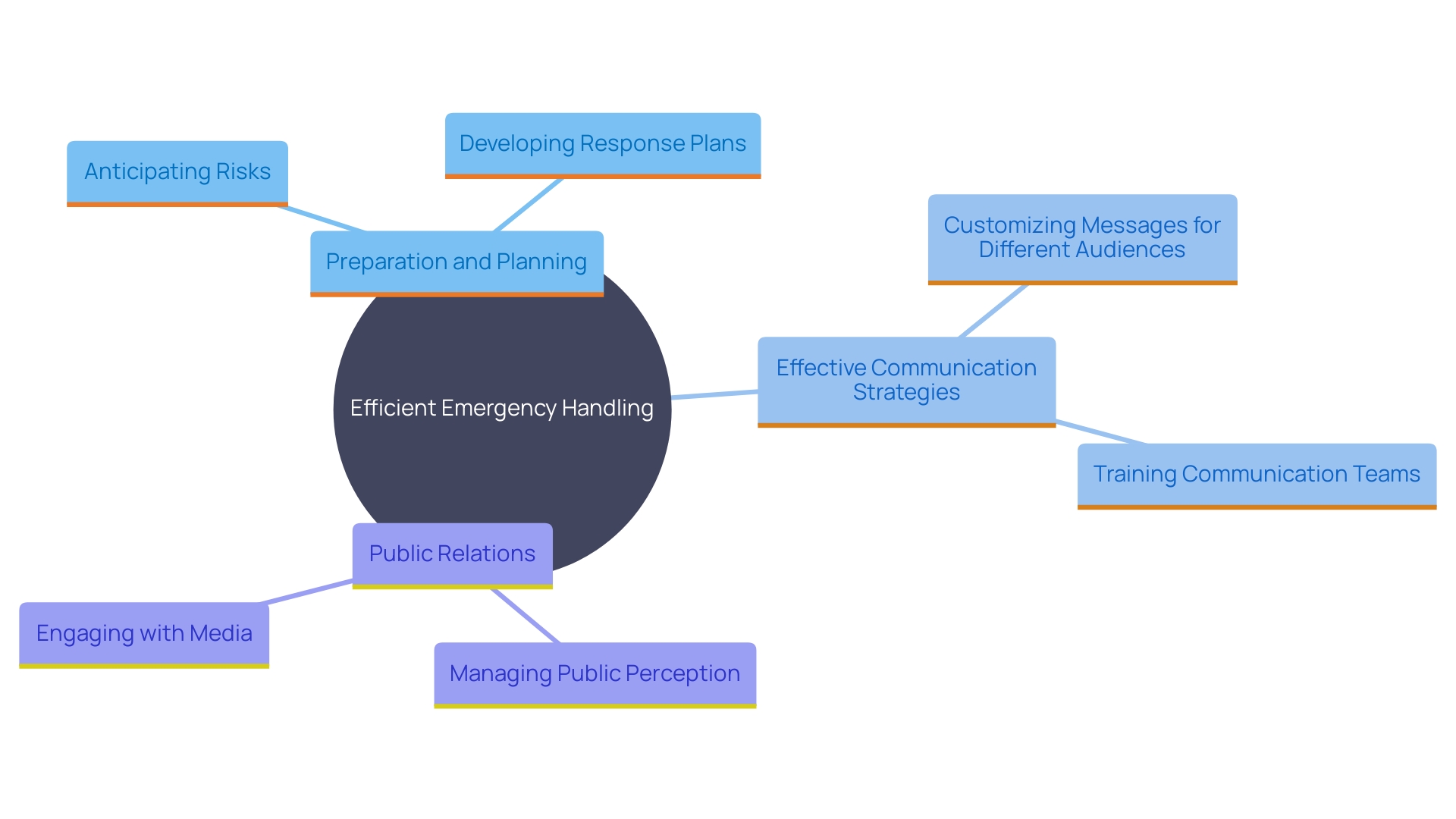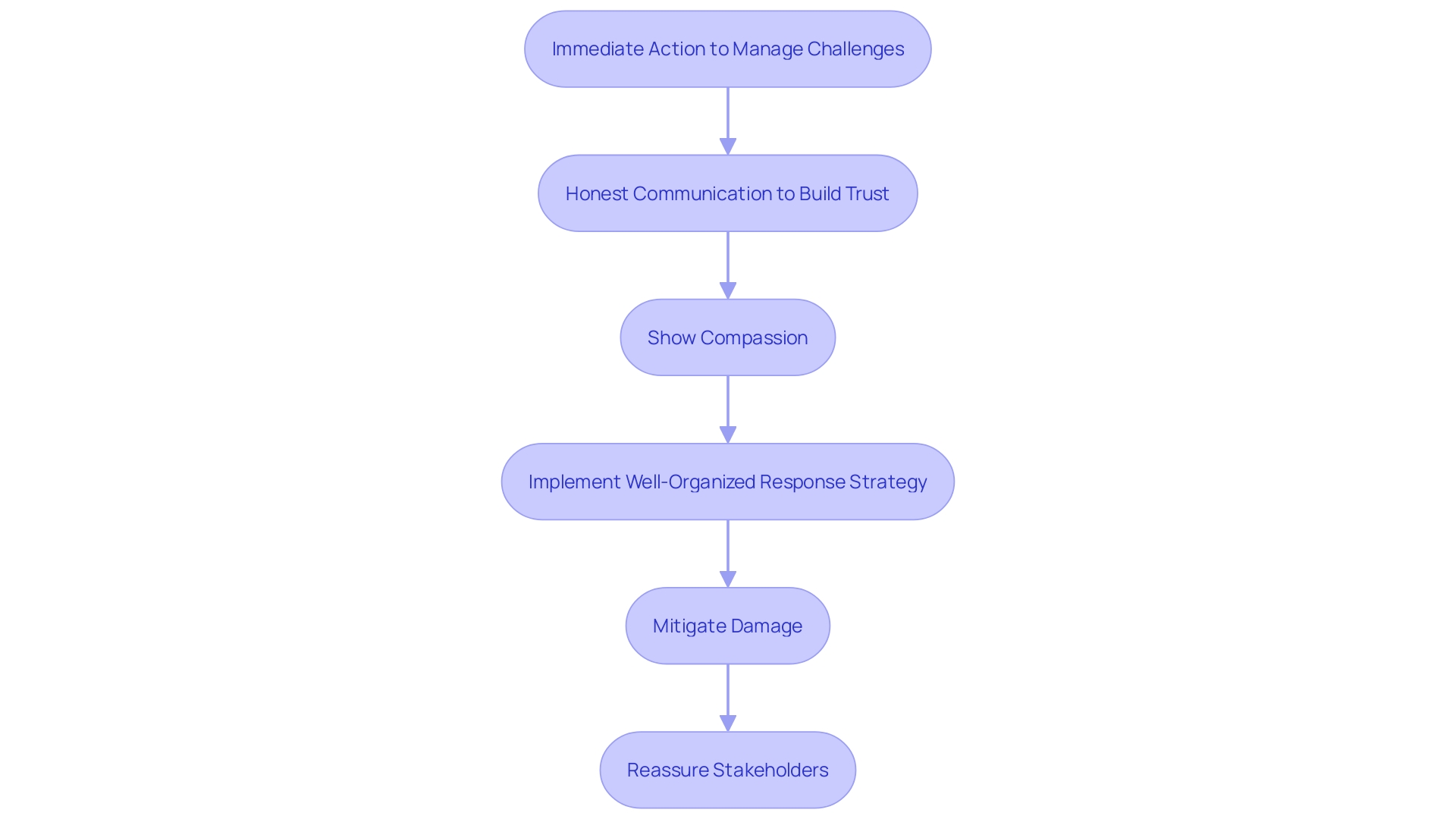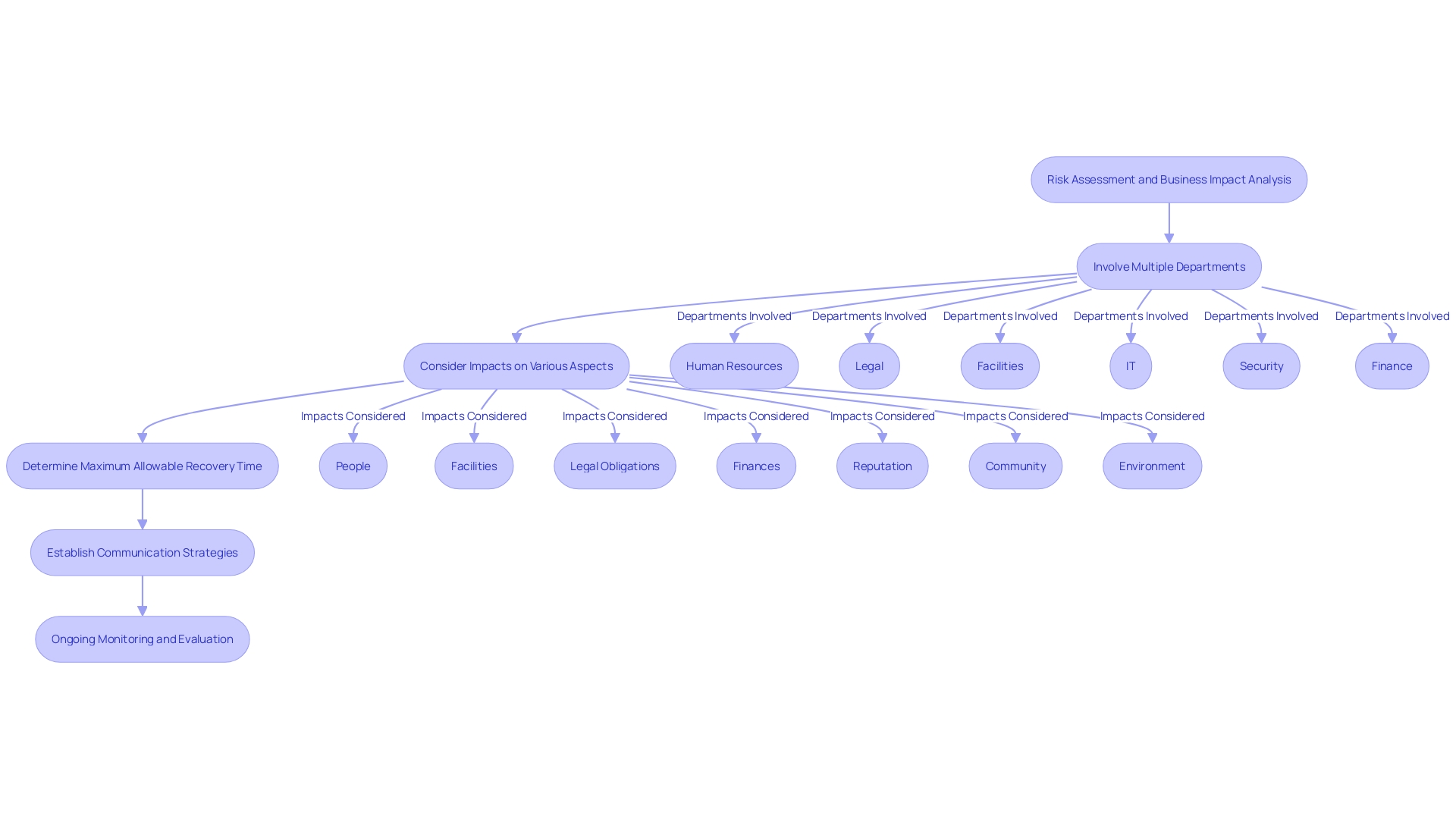Introduction
In today's unpredictable landscape, the ability to manage crises effectively is more critical than ever. This article delves into the key elements that constitute a robust crisis management strategy, offering practical insights for CFOs and business leaders. From meticulous preparation and planning to transparent communication and swift action, each component plays a vital role in ensuring an organization's resilience.
With examples ranging from cyberattacks to natural disasters, the discussion underscores the importance of a comprehensive approach, integrating public relations, business continuity planning, and technology. By embracing these strategies, organizations can not only navigate crises more efficiently but also emerge stronger and more resilient, ready to tackle future challenges head-on.
Key Elements of Effective Crisis Management
Efficient emergency handling relies on several fundamental components that guarantee a smooth and orderly reaction. Preparation and planning are paramount, allowing businesses to anticipate potential risks like cyber attacks, health and safety breaches, or environmental damages, and develop corresponding strategies. Transparency and swift action are critical for maintaining trust and credibility, enabling organizations to respond quickly and communicate honestly with stakeholders. For example, a well-executed emergency management strategy helped reduce damage during the massive data leaks experienced by large organizations in recent years.
Moreover, effective communication strategies are essential for disseminating information, ensuring all parties are informed and aligned. Amid challenges such as the unprecedented wave of violence in Israel and Gaza, clear and compassionate communication played a pivotal role in maintaining community support. Recognizing key audiences enables organizations to customize their messages suitably, addressing the specific concerns of partners, allies, and clients. By understanding the unique needs of each group, organizations can ensure their messages are both relevant and impactful.
Public relations emergency handling, which entails minimizing the effects a negative situation has on your organization and its stakeholders, highlights the significance of these elements. As emphasized by the 2023 World Risk Poll, a significant portion of the global population feels unprepared to handle emergencies, highlighting the necessity for strong emergency response frameworks. By incorporating these essential components, organizations can not only manage challenges more efficiently but also come out stronger and more robust.

Preparation and Planning
Successful emergency management relies on thorough preparation and planning. The cornerstone of this approach involves a comprehensive risk assessment and business impact analysis, factoring in organizational objectives and potential vulnerabilities. This process should engage personnel from diverse departments such as human resources, legal, facilities, IT, security, and finance, ensuring a holistic view.
Developing an activation protocol is essential, allowing prompt and coordinated reactions when an emergency occurs. Clear communication channels must be established to keep all team members informed and ready to act. A defined chain of command is essential for streamlined decision-making, reducing the risk of confusion and delays.
A command center strategy centralizes coordination efforts, allowing for efficient management of resources and information. This centralized approach is particularly vital during natural disasters, security breaches, or other high-stakes incidents that demand rapid, decisive action.
An effective response action strategy provides detailed, specific steps to be taken during a crisis. This strategy should address the impacts on people, facilities, legal obligations, finances, reputation, the community, and the environment. Regular monitoring, reviewing, and testing of the plan are imperative, ensuring it remains robust and adaptive to evolving threats.
Management must also consider the maximum allowable time to recover from an incident, ensuring that recovery efforts are timely and effective. Communication channels with employees, stakeholders, and the media need to be clearly defined to maintain transparency and trust during a difficult time.
In summary, a well-prepared emergency management strategy not only mitigates risks but also enhances organizational resilience, ensuring that the business can weather any storm and emerge stronger.
Transparency and Swift Action
In times of difficulty, maintaining transparency is non-negotiable. Immediate action is crucial to proactively manage emerging challenges. Honest communication builds trust among stakeholders, fostering a sense of reliability. Showing compassion and a strong commitment to addressing the situation reassures both employees and customers, reinforcing the organization's dedication to their well-being. For instance, when cyberattacks lead to massive data leaks, the damage to brand image and loss of public trust can be severe. Successful emergency handling, similar to what is observed in public relations tactics, seeks to reduce such effects. A well-organized response strategy, incorporating actions to avert emergencies and coordinate internal participants, is vital.

Developing a Crisis Management Plan
A strong plan for handling emergencies is essential for any organization to guarantee resilience and swift recovery from disturbances. The process begins with a comprehensive risk assessment and business impact analysis, aligning with the organization's objectives. This involves personnel from various departments, including human resources, legal, facilities, IT, security, and finance, to provide a holistic approach to planning.
The emergency response group should take into account the effects on individuals, facilities, legal responsibilities, finances, reputation, the community, and the environment. It's essential to determine the maximum allowable time to recover from an incident and establish effective communication channels for employees, stakeholders, and the media.
Natural disasters, terrorist attacks, and public health emergencies can severely disrupt operations, making it essential for leaders to develop policies that address these threats. Frequent evaluation and assessment of the emergency response plan are essential, facilitating ongoing enhancement and guaranteeing readiness.
Using technology can improve the efficiency of emergency management. For instance, adopting Security-as-a-Service can provide better value and coverage for both internal and external stakeholders. This approach has been increasingly important as security operations evolve to meet new challenges.
Creating plans for internal and external communications encourages clear and consistent messaging, essential during challenging situations. By integrating these practices, organizations can build a resilient structure capable of withstanding and swiftly recovering from any emergency.

Business Continuity Planning
'Business continuity planning is a cornerstone of emergency management, essential for mitigating the impact of unforeseen events.'. 'The process begins with a thorough risk evaluation and impact analysis on the organization, aligning with organizational objectives.'. Involving personnel from human resources, legal, facilities, IT, security, and finance ensures a comprehensive approach. Prevention strategies aim to identify and reduce risks early, while mitigation strategies focus on minimizing damage during a crisis.
An effective business continuity management (BCM) strategy addresses impacts on people, facilities, legal obligations, finances, reputation, the community, and the environment. It also determines the maximum allowable time for recovery and establishes clear communication channels for employees, stakeholders, and the media.
Recovery strategies are essential, detailing immediate actions to reinstate regular functions, guaranteeing the organization can bounce back quickly. Management should regularly review and test the BCM plan, making necessary improvements to adapt to evolving threats. This proactive approach equips organizations to handle disruptions—be it natural disasters, terrorist attacks, or public health emergencies—ensuring stability and resilience in the face of crisis.

Conclusion
The effectiveness of crisis management hinges on a well-rounded strategy that incorporates preparation, transparency, and swift action. Organizations must prioritize meticulous planning, which involves comprehensive risk assessments and engaging personnel from various departments. This collective approach ensures that all potential vulnerabilities are addressed, allowing for a streamlined response when crises arise.
Establishing clear communication channels and a defined chain of command is essential in reducing confusion and enhancing decision-making processes.
Transparency during a crisis cannot be overstated. Honest and timely communication builds trust among stakeholders, fostering a sense of reliability. Organizations that demonstrate empathy and commitment to resolving issues are better positioned to maintain their reputation and customer loyalty.
With the increasing frequency of cyberattacks and other disruptions, a robust crisis management plan is not just a precaution; it is a necessity for survival and growth.
Business continuity planning is integral to this framework, as it prepares organizations to mitigate impacts while ensuring that normal operations can resume swiftly. Regular reviews and updates of the crisis management strategy are vital for adapting to new challenges. By integrating these key elements into a cohesive strategy, organizations can not only navigate crises more effectively but also emerge stronger and more resilient, ready to face future uncertainties with confidence.




